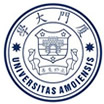2019年陕西高考英语考试真题
C
Marian Bechtel sits at West Palm Beach’s Bar Louie counter by herself, quietly reading her e-book as she waits for her salad. What is she reading? None of your business! Lunch is Bechtel’s “me” time. And like more Americans, she’s not alone.
A new report found 46 percent of meals are eaten alone in America. More than half(53 percent)have breakfast alone and nearly half(46 percent)have lunch by themselves. Only at dinnertime are we eating together anymore,74 percent,according to statistics from the report.
“I prefer to go out and be out. Alone,but together,you know?”Bechtel said,looking up from her book. Bechtel,who works in downtown West Palm Beach,has lunch with coworkers sometimes,but like many of us,too often works through lunch at her desk. A lunchtime escape allows her to keep a boss from tapping her on the shoulder. She returns to work feeling energized. “Today,I just wanted some time to myself,”she said.
just two seats over,Andrew Mazoleny,a local videographer,is finishing his lunch at the bar. He likes that he can sit and check his phone in peace or chat up the barkeeper with whom he's on a first-name basis if he wants to have a little interaction(交流). “I reflect on how my day's gone and think about the rest of the week,” he said. “It's a chance for self-reflection, You return to work recharged and with a plan.”
That freedom to choose is one reason more people like to eat alone. There was a time when people may have felt awkward about asking for a table for one,but those days are over. Now,we have our smartphones to keep us company at the table. “It doesn't feel as alone as it may have before al the advances in technology,” said Laurie Demerit, whose company provided the statistics for the report.
28. What are the statistics in paragraph 2 about?
A. Food variety.
B. Eating habits.
C. Table manners.
D. Restaurant service.
29. Why does Bechtel prefer to go out for lunch?
A. To meet with her coworkers.
B. To catch up with her work.
C. To have some time on her own.
D. To collect data for her report.
30. What do we know about Mazoleny?
A. He makes videos for the bar.
B. He’s fond of the food at the bar.
C. He interviews customers at the bar.
D. He’s familiar with the barkeeper.
31. What is the text mainly about?
A. The trend of having meals alone.
B. The importance of self-reflection.
C. The stress from working overtime.
D. The advantage of wireless technology.
D
Bacteria are an annoying problem for astronauts. The microorganisms(微生物) from our bodies grow uncontrollably on surfaces of the International Space Station, so astronauts spend hours cleaning them up each week. How is NASA overcoming this very tiny big problem? It’s turning to a bunch of high school kids. But not just any kids. It depending on NASA HUNCH high school class, like the one science teachers Gene Gordon and Donna Himmelberg lead at Fairport High School in Fairport, New York.
HUNCH is designed to connect high school classrooms with NASA engineers. For the past two years, Gordon’s students have been studying ways to kill bacteria in zero gravity, and they think they’re close to a solution(解决方案). “We don’t give the students any breaks. They have to do it just like NASA engineers,” says Florence Gold, a project manager.
“There are no tests,” Gordon says. “There is no graded homework. There almost are no grades, other than‘Are you working towards your goal?’ Basically, it’s ‘I’ve got to produce this product and then, at the end of year, present it to NASA.’ Engineers come and really do an in-person review, and…it’s not a very nice thing at time. It’s a hard business review of your product.”
Gordon says the HUNCH program has an impact(影响) on college admissions and practical life skills. “These kids are so absorbed in their studies that I just sit back. I don’t teach.” And that annoying bacteria? Gordon says his students are emailing daily with NASA engineers about the problem, readying a workable solution to test in space.
32.What do we know about the bacteria in the International Space Station?
A. They are hard to get rid of. B. They lead to air pollution.
C. They appear different forms. D. They damage the instruments.
33. What is the purpose of the HUNCH program?
A. To strengthen teacher-student relationships. B. To sharpen students’ communication skills.
C. To allow students to experience zero gravity. D. To link space technology with school education
34. What do the NASA engineers do for the students in the program?
A. Check their product. B. Guide project designs
C. Adjust work schedules. D. Grade their homework.
35. What is the best title for the text?
A. NASA: The Home of Astronauts.
B. Space: The Final Homework Frontier.
C. Nature: An Outdoor Classroom.
D. HUNCH:A College Admission Reform.
微信关注公众号:【福建高考指南丨猎学网】
或扫描下方二维码
回复【试题】获取全部试卷答案
标签:
全部评论
本文转载至互联网,不代表福建高考网立场,如有侵权,请联系官方删除
注:通过加密传输不会对外展示联系方式
-
2023年福建省普通高校招生体育类专业省级统一考试地图标识 2023年福建省普通高校招生体育类专业省级统一考试地图标识 2022-11-10
-
《福建省普通高校专升本招考类别和考试说明》政策解读 近日,福建省教育厅公布《福建省普通高校专升本招考类别和考试说明》。为了让考生、家长及社会各界人士更好地了解、理解我省普通高校专升本招考调整内容,具体解读如下。 一、本次专升本招生考试调整的背景和意义是什么? 我省现行的普通高校专升本招生考试方案实施多年,已不适应当前经济社会发展对人才培养的需要;招考专业类别与现行本科、专科专业类别不相符,部分考试科目和考试内容难以满足当前本科院校对高职毕业生的培养要求,也不适应当前高职院校的教学实际。 2022-11-07
-
《福建省普通高校专升本招考类别和考试说明》公布 为做好我省普通高等学校专升本考试招生工作,更好地适应经济社会发展对人才培养的需要,提高人才选拔质量,省教育厅对福建省普通高校专升本考试招考类别和考试科目进行了调整,并组织编写《福建省普通高校专升本考试说明》,现予以公布。 自2023年起,我省专升本考试按调整后的《福建省普通高校专升本招考类别及考试科目表》执行,《福建省普通高校专升本考试说明》作为考试招生的命题依据。 2022-11-07
-
福州考区2022年成人高考有关事项公告(三) 福州考区考生: 根据福州疫情防控形势,现对本次考试有关事项公告如下: 1.请尚未重新打印准考证的考生,即时凭账号、密码登录福建省教育考试院网站自行打印准考证,以免影响正常考试。 2022-11-04
-
广东科学技术职业学院专业介绍——国际经济与贸易 广东科学技术职业学院专业介绍——国际经济与贸易 2023-05-17
-
九江职业技术学院——2023年移动互联应用技术专业介绍 九江职业技术学院——2023年移动互联应用技术专业介绍 2023-10-25
-
南昌大学医学影像学专业介绍 ◾选择医学影像学专业的N个理由(专业介绍): 1、历史渊源 随着医学影像技术与设备的数字化网络化快速发展,影像诊断人才和应用技术人员远不能适应医学影像学的发展,社会上对医学影像诊断学人才需求量大。1985年天津医科大学在国内率先开设医学影像诊断学专业,而后中国医科大学、泰山医学院也相继开办影像专业,我校于1990年开办医学影像学专业,将放射诊断学、超声诊断学和核医学合并组建医学影像系,并开始在全国招生五年制本科生,当时我国著名核医学专家蔡锡麟教授成为首任医学影像系主任,后由周世良教授、龚洪翰教授接任医学影像系主任,2010年后医学影像系撤系,设医学影像学专业,挂靠第一临床医学院,现由曾献军教授任医学影像学专业负责人。自1990年正式成立医学影像系并招收5年全日制本科生以来,由原先的每年招生30人,逐步扩招至目前的每年120人左右,分两个班教学(由第一、二临床医学院承担)。 2024-07-15
-
泉州医学高等专科学校之医学影像技术专业介绍 医学影像技术专业于2010年8月通过福建省教育厅专业审核,专业为全日制三年学制。医学影像技术专业为我校重点建设专业,已培养毕业生521人,近三年招生规模每年约招生100名。毕业生就业率连续多年保持在90%以上,就业对口情况达90%以上。医学影像技术专业目前拥有5个实验室,包括超声实训室、影像阅片实验室、CT模拟实训室、DR模拟实训室、影像电子学实训室。人才培养成效显著,在全省高职类医学院校名列前茅。医学影像技术专业学生参加全国医学影像技术技能大赛中获得一等奖1项、二等奖2项、三等奖6项及团体二等奖1项、三等奖1项。医学影像技术专业具有一支适应医药卫生教育发展需求的教学水平高、实践与创新能力强、专兼结合的“双师双能型”教学创新团队。教师团队具有享受国务院特殊津贴专家1人,黄炎培职业教育奖杰出教师1名;福建省专业带头人1名,;泉州市直优秀教师1名;泉州市高等职业教育医学影像技术专业名师工作室1个。专业坚持以就业为导向,深化“校院企合作”及“工学结合”,以提高人才培养质量目标,努力为社会培养优秀的影像技术专业人才!医学影像技术专业建设在人才培养模式、课程体系改革、校外教学基地建设等方面形成鲜明特色,在省内同类专业建设中起到一定示范作用。 2024-10-29
-
高考未被录取的原因有哪些? 如果学生在高考中未被院校录取的话,首先要做的就是静下心来,仔细分析未被录取的原因,然后根据原因,制定应对策略。只有找出未被录取的原因,才能有针对性的改进,避免再次犯同样的错误。那么高考未被录取的原因有哪些呢?下面就一起来看看吧。 2023-09-27
-
高考151分能上什么专科大学呢? 高考上大学,报志愿是每一个高考学子们必须要做的重要事情,它不仅关乎着学生们的未来的发展方向,同时也是检验学生们学习情况的一个重要环节。那么,高考151分能上什么大学呢? 2023-11-20
-
高考考不上大学要怎么办? 高考的落幕似乎给一些学生的未来之路画上了一个问号,未能考上大学可能让人感到迷茫和不安。然而,高考并不是决定命运的唯一标尺,每个人的人生都充满了无限可能和转机。在这篇文章中,我们将一起探讨那些在高考中未能如愿以偿的学生可以采取的行动和选择,帮助他们重新找到前进的方向,开启新的人生篇章。 2024-08-16
-
上大学真的重要吗? 在人生的长河中,大学教育常常被看作是一段重要的航程,它不仅代表着知识的积累,也是个人成长的跳板。然而,“上大学真的很重要吗?”这个问题,却像一股潜流,涌动在许多年轻人和家庭的心中。今天,就让我们一起来探讨这个问题,审视大学教育在现代社会中的角色和价值。 2024-11-04
-
2024福建高考英语真题(新高考I卷) 2024年福建高考将于6月7日至9日举行,福建高考英语采用的是全国新高考I卷。福建高考平台将在考后第一时间公布考试真题与答案,请持续关注!最后福建高考平台在此祝大家取得好成绩! 2024-06-08
-
2024福建高考物理真题 2024年福建高考物理已于6月8日结束,福建高考物理采用的是福建卷,考试真题与答案已经公布,考生可以通过查阅真题和答案,了解自己的考试情况,为接下来的备考和志愿填报做好准备。更多高考资讯、高校最新政策、历年高考录取分数线、志愿填报等信息,请关注福建高考网。 2024-06-08
-
2024福建高考化学真题 2024年福建高考化学已经顺利结束,福建高考化学采用的是福建卷,考试真题与答案已经公布,考生可以通过查阅真题和答案,了解自己的考试情况,为接下来的备考和志愿填报做好准备。更多高考资讯、高校最新政策、历年高考录取分数线、志愿填报等信息,请关注福建高考网。 2024-06-14
-
2024福建高考政治真题 2024年福建高考政治已经顺利结束,福建高考政治采用的是福建卷,考试真题与答案已经公布,考生可以通过查阅真题和答案,了解自己的考试情况,为接下来的备考和志愿填报做好准备。更多高考资讯、高校最新政策、历年高考录取分数线、志愿填报等信息,请关注福建高考网。 2024-06-14
-
文史、理工类降分录取政策 本科批按照本科批录取控制分数线招生的专业,原则上不降分录取。其中,安排在本科提前批录取的航海类、公安类、司法类院校(专业),征求志愿录取后生源仍不足的,经批准,可在本科批录取控制分数线下20分以内(含20分, 2020-07-24
-
福建省新高考改革实施方案公布 3+1+2模式! 福建省深化高等学校考试招生综合改革实施方案 为全面贯彻落实习近平新时代中国特色社会主义思想、党的十九大以及全国教育大会精神,根据《国务院关于深化考试招生制度改革的实施意见》(国发〔2014〕35号)和《 2019-06-06
-
宁德师范学院2019年高考录取规则 【专业录取要求】(一)外语语种要求:英语、商务英语专业只招收英语语种考生,其它专业不限考生的外语语种。非外语专业学生进校后只以英语作为公共基础外语安排教学。(二)外语成绩要求:报考英语、商务英语专业考生须 2019-06-05
-
武夷学院2019年高考录取规则 第十六条 学校根据生源情况,在各地招生主管部门规定的范围内确定调档比例。实行平行志愿投档的招生批次,调档比例控制在学校招生计划数的105%以内;实行梯度志愿投档的招生批次,调档比例控制在学校招生计划数120%以 2019-06-05
-
景德镇陶瓷大学2023年高考录取进程公告(一) 景德镇陶瓷大学2023年高考录取进程公告(一) 2023-09-12
-
福州外语外贸学院2023年招生录取工作进度表 福州外语外贸学院2023年招生录取工作进度表 2023-10-17
-
成都医学院2024年普通本科录取规则 1.严格执行国家招生政策和规定,坚持“公开、公平、公正”的原则,德、智、体、美、劳全面衡量,综合评价,择优录取。 2024-07-09
-
成都大学2024年招生录取工作日程表 成都大学创建于1978年,是改革开放后首批地方城市主办的全日制普通本科院校。学校实行省市共建、以市为主的办学体制,是四川省、成都市重点建设大学,是第31届世界大学生夏季运动会运动员村承办大学,FISU银级认证“健康校园”。拥有百年历史的三级甲等综合附属医院和国家级科研平台四川抗菌素工业研究所。 2024-07-24
-
青海省2023年引进急需紧缺人才成都锦城学院专场招聘会 青海省2023年引进急需紧缺人才成都锦城学院专场招聘会 2023-04-26
-
绍兴文理学院元培学院土木工程专业人才培养成果 土木工程专业在专业教学质量保障体系不断完善、加强的背景下,人才培养方面成果显著。 2023-07-30
-
绍兴文理学院元培学院护理学专业人才培养成果 (一)近三年专业就业及深造情况:就业率均在95%左右,考研率逐年上升。 2023-07-30
-
绍兴文理学院元培学院法学专业人才培养成果 近三年该专业就业情况 近年来法学专业人才培养质量不断提升,在学科竞赛、司法考试、考研等方面成绩显著。学生参加历年司法考试的平均通过率超过40%,在2019年国家统一法律职业资格考试中,通过率达55.12%;在2021年国家统一法律职业资格考试中,通过率达42.7%,在同类独立学院中排名领先;考研人数日趋增长,多位优秀学子考入复旦大学、同济大学、华东政法大学、西北政法大学、苏州大学、浙江工商大学等国内知名院校,如2011级陶琨炜同学,硕士研究生毕业后于2018年考入同济大学法学院攻读法学博士学位;2016级的张宏旦同学以专业总分第一的成绩考入西北政法大学攻读法学硕士学位。 2023-07-30
今讲高考升学
-
官方企业微信
-
官方微信公众号
-
志愿填报小程序





